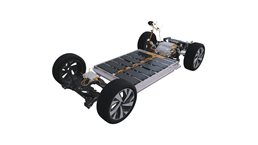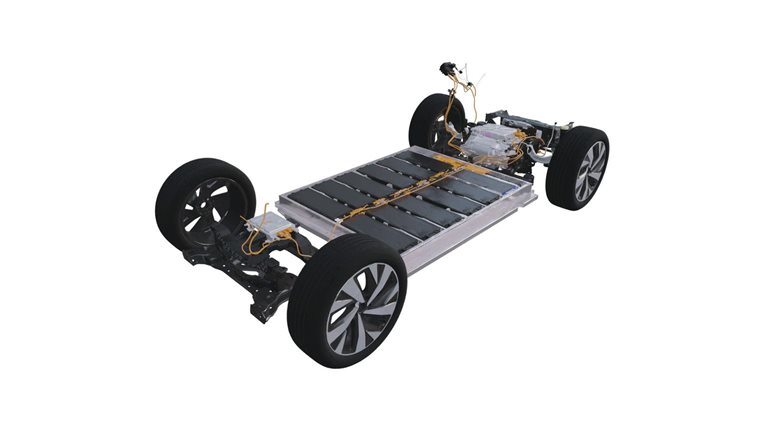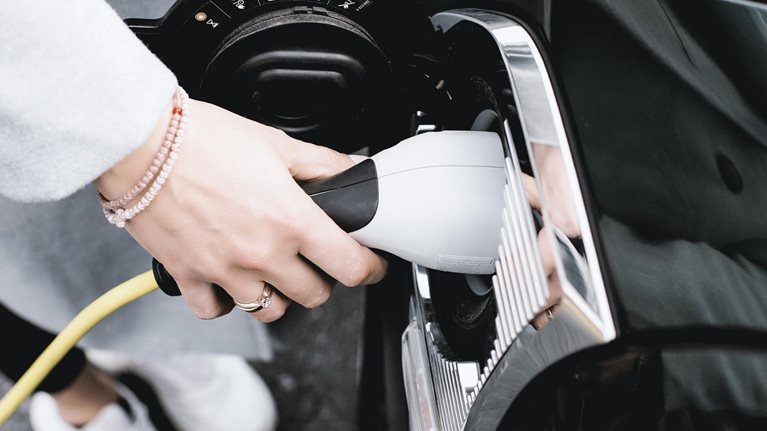Sales of battery-electric vehicles (BEVs), the main driver of demand for charging infrastructure, are expected to grow by more than 25 percent annually through 2030, when about 120 million passenger BEVs will be sold.1 That growth will be driven by declines in battery prices and total costs of ownership, increases in fleet electrification, and the enactment of emissions targets (see sidebar “Regulatory tailwinds in the United States”). This growing number of BEV owners will require more public charging facilities.2
As the EV customer base expands and it becomes possible to electrify more use cases, demand for public fast charging will increase. Across the entire EV-charging value chain, the greatest value will come from the resale of electricity for on-the-go charging—a use case in which drivers pay a premium for a charge within an hour or less, allowing them to continue a trip. Pure-play charge point operators (CPOs)—businesses that specialize in the resale of electricity in public charging—are the main players active in this market. Currently, these businesses are mostly newly founded companies with the sole purpose of serving EV-charging customers. As EV penetration increases, a range of new entrants with significant relevant experience and capital (for example, utilities and oil and gas majors) will make material investments in public charging. Success in this market will thus require competitive differentiation.
Public charging—the CPOs’ home turf—is taking off
The required configuration and specification of EV-charging infrastructure varies, depending on use case, customer needs, and the parties involved (Exhibit 1). A single-family or multifamily home or an apartment complex, for example, might have private parking equipped with chargers. These are generally alternating-current (AC) units that charge a vehicle’s battery in eight to ten hours, presumably while the car is parked at home. Workplaces may offer their employees a similar system, typically paid for by the employer. In public charging, by contrast, a vehicle owner pays a premium to have the battery recharged, using either AC charging boxes or direct-current (DC) fast chargers, in a public parking lot.

At the moment, CPOs tailor their offering to either of two public fast-charging use cases. The first, on-the-go charging, is typically a pricier option but also delivers the highest charging speeds. The more moderately priced alternative is destination charging: drivers can recharge (or just top up), usually with an AC charger, while they spend a couple of hours shopping in a mall or other travel destination.
To make the on-the-go use case work, charger technology focuses on DC chargers that deliver up to 350 kilowatts or even more, allowing rapid energy supply to EV batteries. In contrast, standard AC chargers at residences, workplaces, and public slow settings deliver only 11 to 22 kilowatts per hour. DC chargers require a significant investment. Today, the hardware alone costs between $50,000 and $100,000, although costs are likely to fall significantly—about 40 percent—over the next five to seven years. Installation can more than double the cost, depending on the size and layout of the station. DC chargers also require increased effort for installation and high-powered grid connections.
Given the sizable investment required, it is paramount that the delivery of energy provides sufficiently high recurring revenues based on sizable resale premiums or other services offered. In public use cases, CPOs can charge a premium based on location and speed (for instance, kilowatts delivered to the vehicle). If margins and utilization for delivering energy are high enough, the recurring revenues may justify the investment. Given the difficulty of achieving sustainable profits at scale with current EV penetration and utilization levels, players in this market are currently testing various business models, service bundles, and value propositions. Some are working with demand-side partners, such as automotive OEMs and rideshare companies, to create a more predictable and stable business, as well as “stickiness” for customers.
Competition is moving in
Pure-play CPOs, as the first movers in public charging, are beginning to face increasing competition from a range of new entrants and types of businesses, especially in the United States and Europe (Exhibit 2). These vary in the quality of their (micro) locations and their cost structures for reselling electricity:

- Pure-play CPOs, as we have noted, are the first movers in public fast charging. They present a branded face to customers and offer a high-quality user experience in fast-charging infrastructure and software. This experience translates into a value proposition that includes high charging speeds and a relatively seamless customer experience, often at high-quality locations, such as highways and valued retail destinations. Typically, the business model focuses on electricity arbitrage plays. To be price competitive and reduce the risk that comes from the mere sale of energy, CPOs may need to explore partnerships and adjacent offerings (horizontal arrow in Exhibit 2).
- Energy companies (oil and gas players) have started to diversify toward renewables. They are not fully dependent on the short-term profits from charging operations, since funding from other revenue sources is possible. Their focus is to keep the existing fuel retail network’s utilization high. They usually offer EV fast charging at existing gas stations, after adding the necessary infrastructure. These locations are designed for use by internal-combustion-engine (ICE) vehicles, which occupy spaces for significantly less time because fueling them is faster. Energy companies in this category may move away from their existing ICE gas stations to more tailored locations adapted to the needs of EVs (vertical arrow in Exhibit 2).
- Local energy companies (utilities) are well established and well known to customers. Usually, they can also procure electricity at lower price points than their competitors in oil and gas do. They also have the distinct advantage of direct customer access and experience in grid infrastructure. If they sell energy to private homes, they can package well-priced, integrated bundles. In the future, such players can easily adapt smart-charging and load-management offerings. However, local energy companies in the utilities category have no experience running locations especially tailored to the requirements of on-the-go or destination charging. Additionally, not all utilities are allowed to enter the energy-resale business by their regulator, particularly in the United States.
- Automotive OEMs are expected to step into the electric-vehicle-charging-infrastructure (EVCI) ecosystem, at least temporarily, to enable the adoption of EVs. Some automotive OEMs seem to view this market as more than an enabler and are slowly building profitable, standalone CPO businesses. Still, they have no immediate need to gain margins from energy arbitrage, as long as they are only focused on enabling EV adoption. They hold customer relationships and can create stickiness, especially if the market evolves to Plug&Charge. Like utilities, OEMs have no relevant experience with charging locations.

Building better batteries: Insights on chemistry and design from China
The companies actively trying to move along the EVCI value chain include large players in oil and gas (BP and Shell, for example), OEMs (such as Ford and Tesla), and well-funded pure-play CPO start-ups (like Electrify America, EVgo, and Volta). In the United States, utilities are less likely to pose a material threat to CPOs, because regulators focus on rate-basing grid upgrades more than on utility-owned and -operated networks. Utilities are therefore more likely to be partners or enablers of growth. In other regions, such as Europe, utilities—for example, ENBW and E.ON in Germany and Engie in France—are actively entering the EVCI space.
A comparison between the US EV-charging market and other regions and industries suggests that three to four players can sustain an above-average market share (15 percent or more) in more mature markets. It is too early to tell if this will hold true in all geographies, but we may see more fragmented EV markets consolidate and converge to a similarly concentrated industry structure.
How CPOs can build and sustain competitive differentiation
Some charging operators or segments of CPO networks are not yet profitable because of high installation costs (up to about $200,000 for hardware procurement and installation of a small DC fast-charging site with two chargers and two plugs per charger), demand charges (about five to 20 cents per kilowatt-hour), and underutilization (averaging less than 8 percent across their entire network). For fast chargers, the issue is exacerbated by higher costs and higher surcharges.
The highest risk to attaining profitability is utilization. Increased market competition could drive down charging prices and charger costs, but installation and land-use costs may increase during the build-out of infrastructure. These conditions mean that price alone cannot be a sustainable basis for competition; CPOs must have a differentiation strategy that delivers a relevant and appealing value proposition to their customers (see sidebar “Electric-vehicle owners’ charging preferences”).
To create and sustain competitive differentiation, CPOs should address several factors (Exhibit 3), including three core drivers of utilization: the quality of the microlocations, charging speed, and scalable partnerships with, for example, rideshare and e-commerce companies. To support ancillary profits, CPOs need to focus on further revenue streams, such as those from adjacent services (for example, reservations), convenience retailing, and advertisements. Finally, the customer experience can create stickiness and can therefore improve both utilization and profitability.

Location. CPOs need to build up a dense, reliable network that provides customers with sufficient scale and carefully selected macro- and microlocations in high-traffic areas (see sidebar “The role of roaming”).
Speed. The market for existing 50-kilowatt networks is likely to persist for the next three to five years, but drivers increasingly demand faster charging. Market participants will need to invest heavily in evolving infrastructure that delivers more than 150 kilowatts an hour. Companies are beginning to employ technologies that could deliver 350 kilowatts an hour for passenger cars and 500 to 1,000 for commercial heavy-duty vehicles. To generate strong demand for these technologies, more vehicles that can accept such high charging speeds would need to enter the market (for instance, the majority of the passenger car volume segment would need to be on 800 volt architecture, or further advanced battery technology would be needed across most vehicle classes). OEMs forecast that such vehicles might enter the market over the next two to five years.
Partnerships. CPOs need to develop partnerships, particularly those with the greatest potential to help drive up utilization (and associated kilowatt consumption). Depending on strategy, partners could be retailers (such as Kimco, Target, or Walmart) offering attractive destinations or OEMs (for example, Ford, GM, or Toyota) that can offer cheaper or preferred access to charging-station locations. Rideshare fleets in the most EV-dense areas, such as Denver, Los Angeles, San Francisco, and Seattle, could encourage their drivers to use a preferred charging provider. Partnerships with retailers or other destination companies could make a charging service the partner of choice to supply their parking lots with chargers.
Ecosystem services. Adjacent revenue streams could not only diminish the risk of the CPOs’ current dependency on utilization but also improve margins. Horizontal revenue streams could come from the mobility-service ecosystem (for example, package delivery to cars), charger reservations, and convenience retailing (convenience stores, coffee shops, pharmacies, and so on). Vertical expansion could extend to software as a service and turnkey systems to fleets, workplaces, or homes.
Customer experience. Market leaders in DC fast charging can create stickiness by leveraging their know-how for brands, enabling software, and a seamless customer experience. A seamless app—as banks, coffee shops, and other consumer-facing businesses have already shown—can cement customer loyalty by making repeat visits much easier than visits to a competitor. For EV charging, a key value is reliability; drivers with a low battery charge will understandably prefer a company whose chargers consistently work properly. Clean and safe locations are other basic requirements. Players also can distinguish themselves by offering reservations and top-notch charger hardware that communicates efficiently with a vehicle’s battery-management system.
To achieve sustainable profitability in EV fast charging, CPOs will need to improve their utilization by excelling in customer experience, raising demand through partnerships, expanding their network strategically, implementing innovative methods to optimize throughput and developing nonenergy adjacent revenue sources. Those that do so will have a head start in what is expected to be a key part of transportation’s future.


